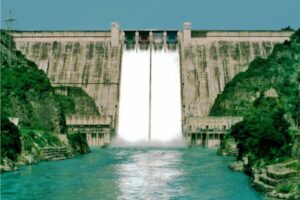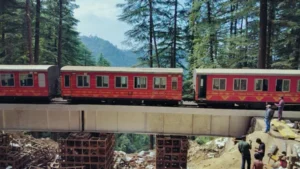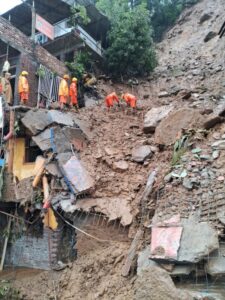Himachal in Crisis: Climate Change Wreaks Havoc on the Land of the Gods

Devastating floods and landslides are now a frequent menace on the Himalayan slopes, destroying human settlements, orchards, crops, watermills, and even hydropower projects.
Himachal Pradesh—revered as Devbhumi, the land of the gods—is in the grip of nature’s fury. Known for its ancient landscapes, cultural richness, and favorable climate, the state has long been a favored destination for both Indian and international tourists. Its thriving orchard economy and off-season vegetable cultivation sustain local livelihoods while enhancing its appeal year-round, except for the lean monsoon period. Even during the rains, regions such as Pangi, Lahaul-Spiti, and Kinnaur remain accessible, while pilgrimages like the Manimahesh Yatra, Shrikhand Mahadev Yatra, and Kinner Kailash Yatra draw large numbers of devotees between Janmashtami and Radha Ashtami.
Yet in recent years, climate change has unleashed disasters of unprecedented intensity. Flash floods and landslides are now relentlessly battering the hillsides, causing unending loss of life, property, and livelihoods. Cloudbursts are not new to the Himalayas, but their frequency and scale in recent years have risen to alarming levels. Year after year, the state has faced nature’s wrath on a scale beyond the imagination of citizens and planners alike.
Reports show that cloudbursts have occurred across Himachal—from Chamba to Nahan—but the devastation in Mandi district’s Janjehli-Thunag region is particularly alarming. For the second consecutive year, this area has suffered heavy losses: 69 lives lost, hundreds injured, livestock swept away, and nearly 400 homes destroyed. With roads crippled and communication lines cut, relief efforts have become a daunting challenge. Essential supplies—food, clothing, medicine—are being airlifted by army helicopters, while NDRF and SDRF teams toil relentlessly on the ground.
These crises raise pressing questions: Why are natural disasters intensifying every year? What has gone wrong in our approach to mountain development and planning? Is unchecked road construction, unplanned urban expansion, or unrestrained hydropower development to blame? The Himalayas are warming faster than the global average, and methane emissions from hydropower reservoirs—eight times more potent than carbon dioxide—are further aggravating the crisis.
Equally troubling is the unscientific approach to road construction: indiscriminate dumping of debris, poor drainage planning, steep slope cutting, and substandard stabilization work—all of which destabilize fragile mountain terrain. The obsession with four-lane highways needs to be re-examined. Alternatives such as ropeways for mainstream transport, improved public transit, and the adoption of electric vehicles could ease tourist mobility while reducing ecological stress.
Deforestation to clear the way for large infrastructure projects compounds the problem. Calls for an alternative development model for the Himalayas are not new—they go back to the Chipko Movement of the 1980s and have been echoed by campaigns like the Himalayan Policy Campaign. In fact, as early as 1992, an expert group chaired by Dr. S.Z. Qasim submitted a landmark report recommending a sustainable development model for the region—guidelines that remain just as relevant today.
Moving forward will require political will. Committees of ecologists, geologists, meteorologists, and technical experts must be empowered to recommend scientifically sound, sustainable strategies. Only then can Himachal Pradesh—and the fragile Himalayas more broadly—hope to strike a balance between development and ecological preservation, turning the much-discussed but rarely implemented idea of sustainable development into a living reality.

Continuing the achievement of the journey of effectiveness and credibility of more than 10 years in the career of journalism, as a woman journalist, I am Serving as the founder, promoter and editor of DiaryTimes with the trust and support of all. My credible coverage may not have given a big shape to the numbers, but my journey presents articles that make you aware of the exact and meaningful situations of Himachal’s politics, ground issues related to the public, business, tourism and the difficult geographical conditions of the state and financial awareness. DiaryTimes, full of the experience of my precise editorial expertise, is awakening the flame of credible journalism among all of you, so that the eternal flame of meaningful change can be lit in the life of the people of the state and the atrocities being committed against the people can be brought to the fore, I am motivated for that. If even a small change comes with the power of my journalism and the whole world becomes a witness to that issues, then I will consider myself fortunate.





